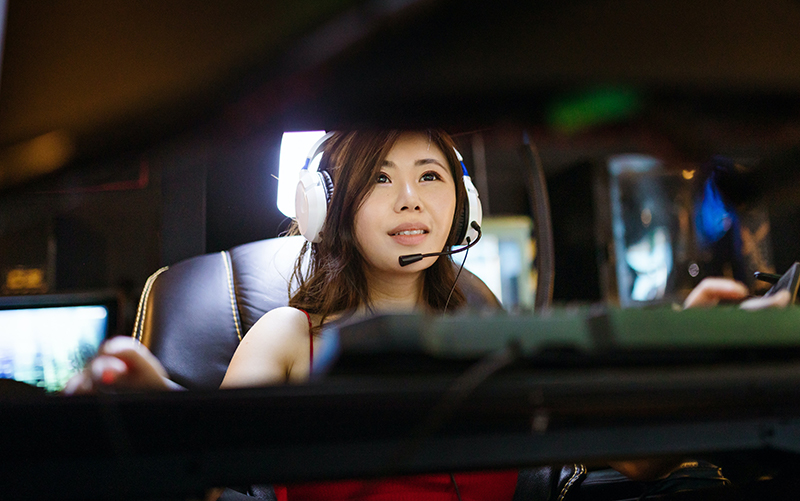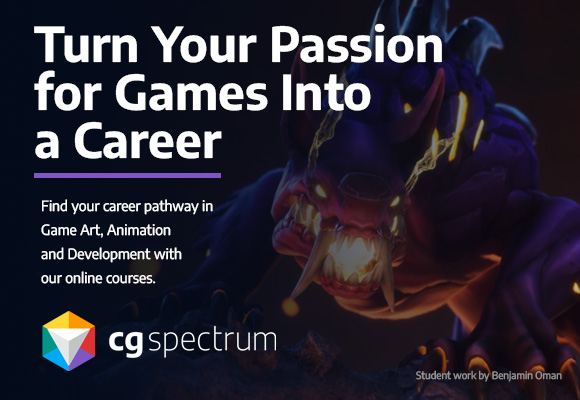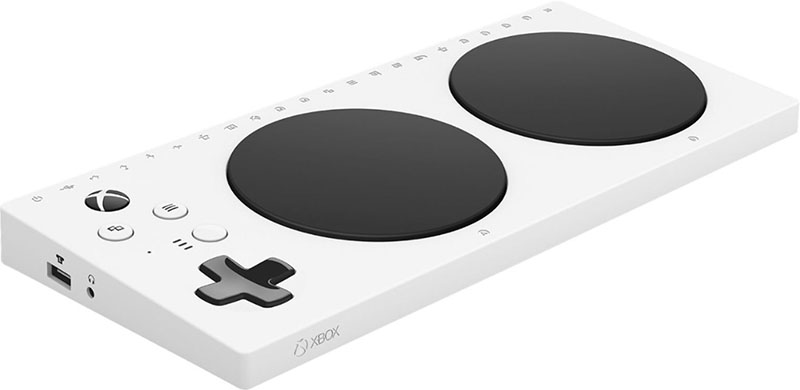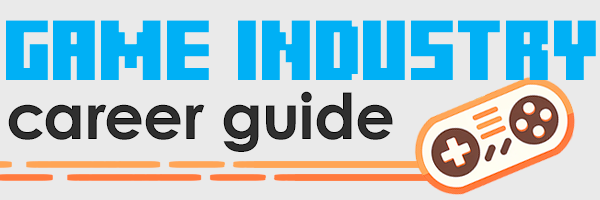How Is the Video Game Industry Improving Diversity?

Historically, video game companies have struggled with diversity. Even though female game developers have made important contributions since the beginning, the fact is, game teams were largely staffed and run by people closer to the “nerdy white guy” stereotype.
The problem is, games tend to reflect the backgrounds and interests of their makers. So it’s not surprising that a lack of diversity on game teams has resulted in a lack of diversity in games — in terms of protagonists, characters, stories, and accessibility.
But all that is changing, and fast. Here are three important ways the game industry is working to make games, and game development, more accessible, diverse, and inclusive for everyone.

1. Greater representation in games
For much of gaming history, video games featured mostly white male protagonists. There wasn’t much diversity in the types of characters, their backgrounds, or the types of stories being told.
That lack of diversity doesn’t just limit the range and depth of possible play experiences. It also misses out on showing characters and stories that would allow people from diverse backgrounds to see themselves represented in the games they love.
Fortunately, there’s a growing trend toward broader representation in games. From the smallest indie projects, to the biggest AAA giants, developers have started amping up their representation by including different races, ethnicities, genders, sexual orientations, and abilities into their games.
This is great for business, and great for gamers! Representation improves a game’s appeal to a world-wide audience, and helps create a more inclusive gaming industry as a whole.
There are many examples of recent games projects that have pushed the industry forward in representation. Here are just a few recent highlights:
The Last of Us Part II, by Naughty Dog, is one of my personal favorites. This game features a diverse cast of characters, including LGBTQ+ and disabled characters. It also includes a nuanced exploration of complex issues such as trauma, abuse, and discrimination.
Hades, by Supergiant Games, features a diverse cast of characters, including characters of color and LGBTQ+ characters. Its characters also represent a range of body types and physical abilities.
The Legend of Zelda: Breath of the Wild, by Nintendo, showcases a non-binary character, and immerses players in a world with a range of diverse races and cultures.
Disco Elysium, by ZA/UM, features a diverse cast of characters, including a transgender character and characters of color. It also tackles complex issues including racism, classism, and trauma.
Spider-Man: Miles Morales, by Insomniac Games and Nixxes Software, depicts a biracial protagonist, and includes a range of diverse characters and storylines. It also deals with issues such as gentrification and racial tension.
2. More inclusive companies and communities
In the past, the game industry has often been associated with a culture of toxicity, with highly-visible instances of harassment, inequality, and discrimination towards certain groups of people.
But despite a number of recent controversies — maybe partly because of it — there’s a clear trend towards building more inclusive and welcoming companies and communities. Game organizations around the world are working to address and prevent harassment and toxic behavior online and on the job, and promote diversity and inclusivity within the industry as a whole.
How are they doing it? Game companies and community managers are fostering better inclusion by developing initiatives like these:
Anti-harassment initiatives. Many game companies have implemented programs to help prevent harassment at work and on their game forums. These initiatives include new reporting systems, community guidelines, and other measures to educate employees on best practices to ensure the safety and well-being of workers and players.
Diversity and inclusion in hiring. Many game companies have implemented diversity and inclusion (also called D&I, or DEI) training and programs to promote a more inclusive and welcoming environment. DEI programs usually include mechanisms such as diversity training for employees, the creation of diversity and inclusion committees, and improved hiring and promotion practices that reduce bias and support diversity.
Working with advocacy groups. Game companies are supporting and consulting with diversity-focused advocacy groups such as BAME in Games, Black Girl Gamers, and Fearless Futures. Consulting with advocacy groups can help game studios improve organizational diversity, and help ensure games and storylines are diverse and inclusive.
Community moderation and management. At this point, most online gaming communities have implemented moderation and management practices to nurture a more positive and welcoming environment. This can include things such as creating and enforcing community guidelines, actively moderating online discussions and interactions, and providing resources and support for players.
Inclusive game design. As discussed above, many game developers are making intentional efforts to design games that are inclusive and welcoming to all players. This can be through designing diverse characters and storylines, and by adding accessibility features that make games more inclusive for players with disabilities.
Industry events and conferences. Many industry events and conferences, such as gaming conventions and esports tournaments, are creating more inclusive and welcoming environments to attract attendees from diverse backgrounds. Inclusion efforts at these events can be through implementing codes of conduct, providing resources and support for marginalized groups, or training and promoting diversity and inclusivity among staff and attendees.
Microsoft’s Adaptive Controller unlocks new experiences for gamers whose disabilities may rule out conventional controllers.
3. Increased accessibility

Historically, for people with certain disabilities, video games were difficult to play. Or in many cases, even impossible. That’s because games didn’t usually support accessibility features to accommodate players with disabilities. But in recent years, both developers and publishers have really started making accessibility a priority.
Why now? Maybe it’s because of altruism (“doing the right thing”), or maybe it’s because empowering more people to play your games simply makes good business sense (“more players equals more money”).
Whatever the reason, today’s developers think about accessibility differently. Many industry professionals have partnered to form advocacy groups such as Game Accessibility Guidelines and Accessible Games, which offer training and guidance to game companies. And some of the top game studios, such as Naughty Dog, even have full-time employees focused on making their games work for all players.
Accessibility features can range from simple settings, to cutting-edge assistive technology. Take a look at any game made in the past few years, and you’re likely to see some or all of these accessibility features:
Accessibility settings. Many games now offer a range of accessibility settings, so players can customize the game to their needs. Look for settings such as text-to-speech, enlarged text, voice control, support for alternative input devices, and colorblind modes.
Re-mappable controls. Today, most games offer some way for players to re-map controls to suit their needs. That’s especially helpful for players with physical disabilities, who may have a hard time using the standard control mappings. But it also helps all players, because it lets anyone map controls in whatever way works best for their individual play style.
One-handed controls. Many gamers have mobility impairments that make it difficult to use both hands. To help cope with this, some games offer one-handed control schemes. Just turn it on in the accessibility settings menu.
Audio descriptions. As any gamer knows, the game’s graphics and visuals are mission-critical for navigating the game world and understanding what’s going on. But for players who are blind or have low vision, it’s not as easy as just looking at the screen. To assist, some games have an option to turn on audio descriptions. The game will then use text-to-speech or recorded audio to describe what’s on screen, opening up new gaming possibilities for millions of vision-impaired gamers.
Closed captions. Most games offer subtitles (an on-screen text representation of spoken dialog), but many go a step further and offer closed captions. Closed captions are text that displays not only the dialog, but also text details that describe the game’s sound effects, and even the type of music or the mood of the musical score. This is a life saver for players who are deaf or hard of hearing — and it also helps people playing late at night with the sound off (so they don’t wake their spouse or their newborn!).
Alternative input methods. Some games support alternative input methods, such as eye tracking or voice controls, which can be helpful for players with mobility impairments. These alternative input methods often require specialized hardware such as the Microsoft Adaptive Controller, or the Optima Joystick by Pretorian. But when it means the difference between gaming or not gaming, the added expense might just be worth it.
But is it enough?
While the game industry has made big improvements in the past few years, there’s a lot more work to be done. The good news is, thousands of developers and players are committed to making real change. A recent developer survey by IGDA showed that game developers are more concerned than ever before with the importance of diversity in the workplace, in their game content, and in the industry as a whole.
From lone developers, all the way up to the CEOs of the biggest game companies, the game industry is working hard to make change. Change that will create a more positive, inclusive, and welcoming experience for developers and players everywhere.
Would you like to become part of the solution? Check out the diversity and inclusion resources provided by the International Game Developers Association (IGDA) at https://igda.org/resourcelibrary/event-diversity/.
Image: rodnae productions / Pexels
Read my new book!
Making games for a living is an incredibly rewarding career, but it’s hard to break in unless you have insider knowledge. This book levels the playing field.


Leave a Reply